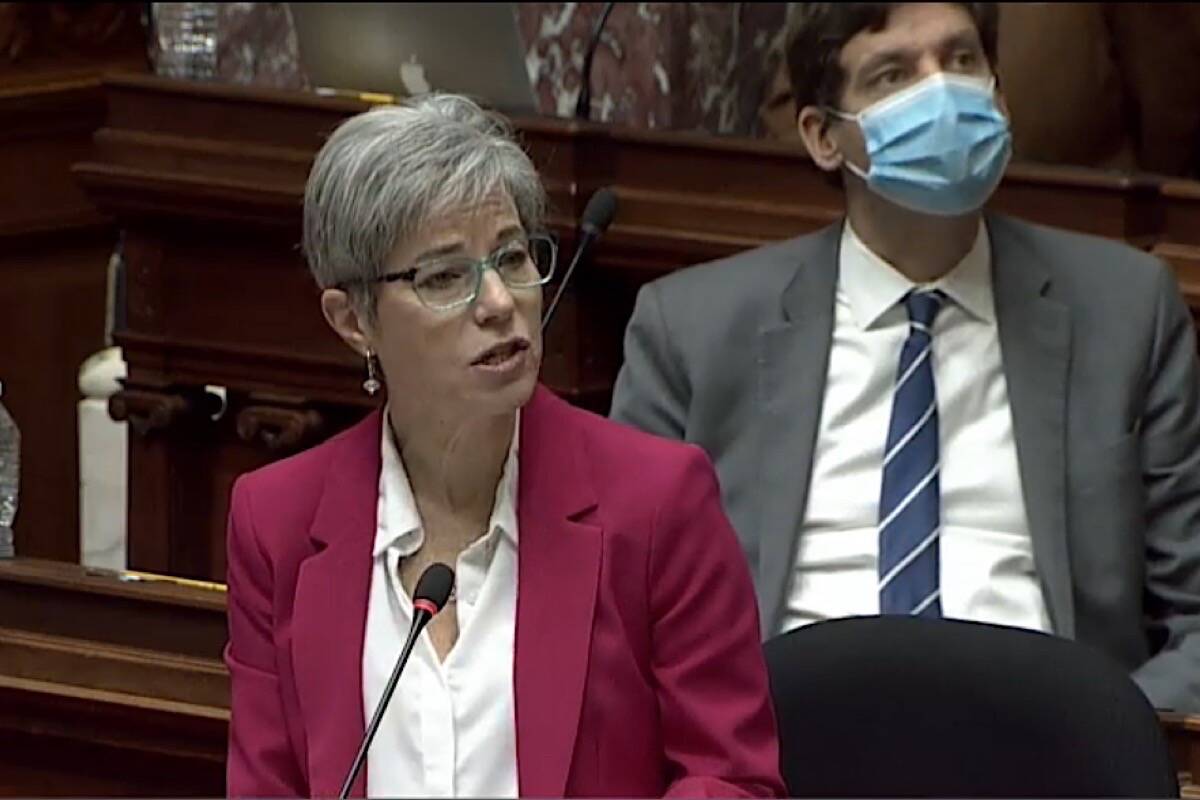The B.C. government expects to come close to balancing the books for the current year, thanks to economic recovery and property taxes from a hot housing market, but the end of federal COVID-19 supports and increased spending will push up provincial debt in the next three years.
Finance Minister Selina Robinson presented the NDP government’s 2022-23 budget on Tuesday, projecting a deficit of $483 million for the year ending in March. That’s far from last spring’s projection of a $9 billion deficit, but red ink is projected to rise again with new spending and the wind-down of federal pandemic supports.
The three-year budget projects a deficit of $5.5 billion for 2022-23 and $3.2 billion for 2023-24, as B.C. faces continuing health care cost increases and a big bill for reconstruction from the floods and fires of 2021.
In her budget speech to the B.C. legislature Feb. 22, Robinson referred to the disasters affecting Abbotsford, the Nicola Valley, Princeton and Lytton. B.C.’s costs are partly offset by a $5 billion commitment from Ottawa for fire and flood recovery.
“This year’s budget delivers more than $2.1 billion to help us prepare for, respond to, and recover from floods, heat waves and wildfires,” Robinson said. “A total of $400 million will cover known costs, from removing debris to providing financial assistance for hard-hit people, business and communities. An additional $1.1 billion is earmarked in contingencies to support additional recovery costs in the months ahead.”
With an aging population and a surge of spending to support overtaxed senior care, doctor and nurse services, health care costs are projected to continue growing as they near half of the province’s spending. The budget is projected to grow from $24 billion in the current year to more than $27 billion by 2024-25.
Robinson reminded reporters Tuesday of Premier John Horgan’s efforts to persuade Prime Minister Justin Trudeau’s government to shoulder more of the burden of health care costs. Once a 50-50 split, Ottawa now provides only one dollar out of five in health transfers, she said.
RELATED: B.C. Wildfire Service going year-round to reduce risks
RELATED: B.C. braces for shrinking forest industry, lands ministry
@tomfletcherbc
tfletcher@blackpress.ca
Like us on Facebook and follow us on Twitter.

